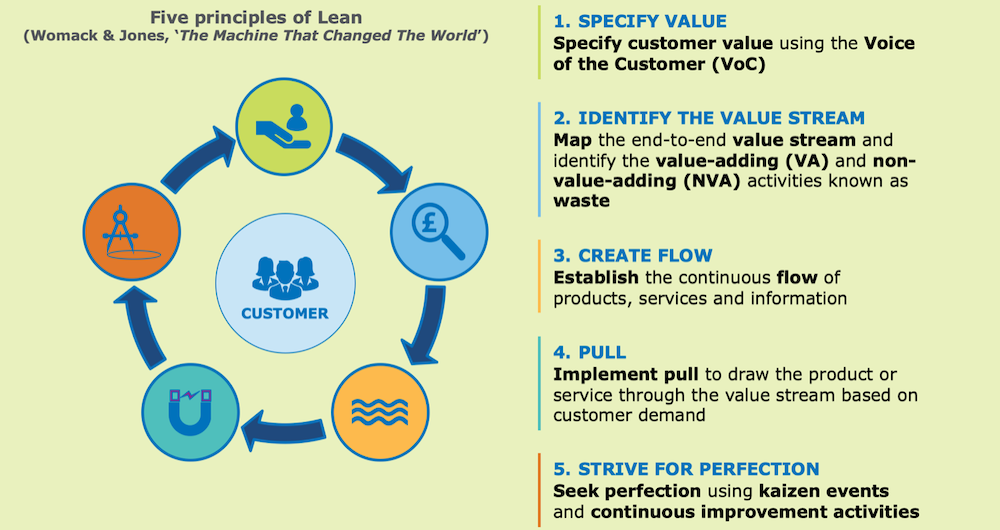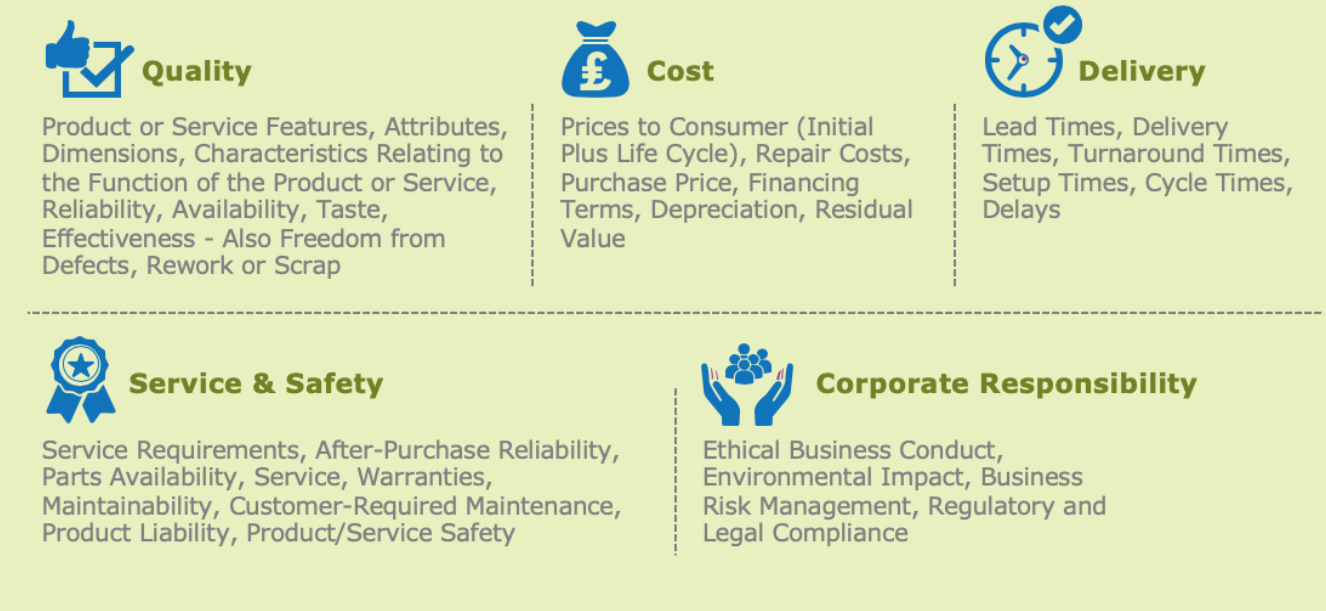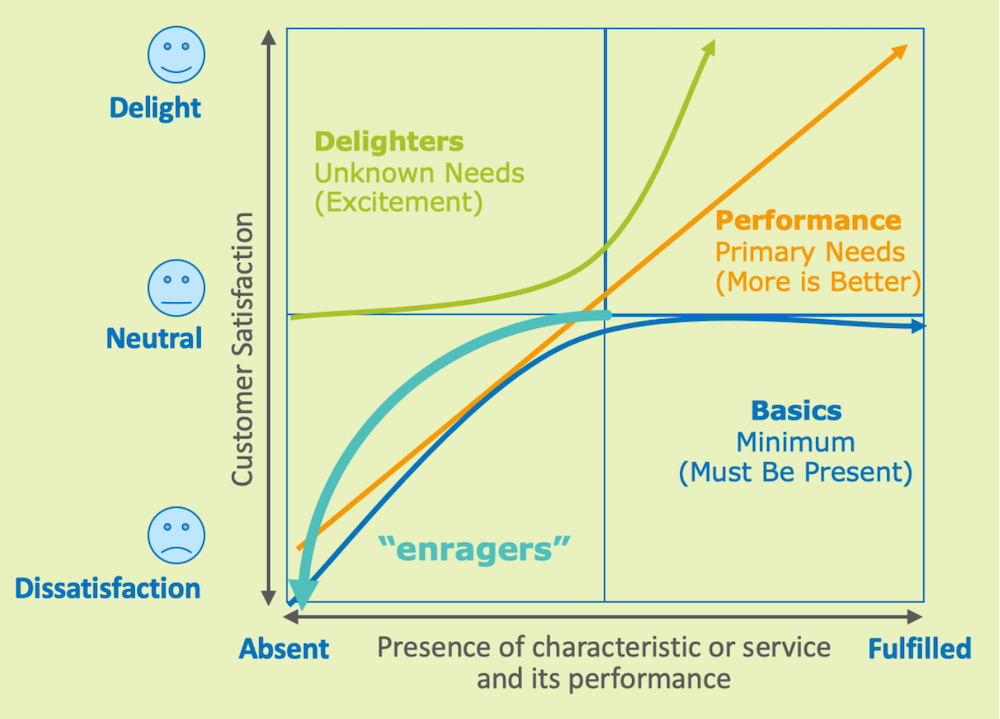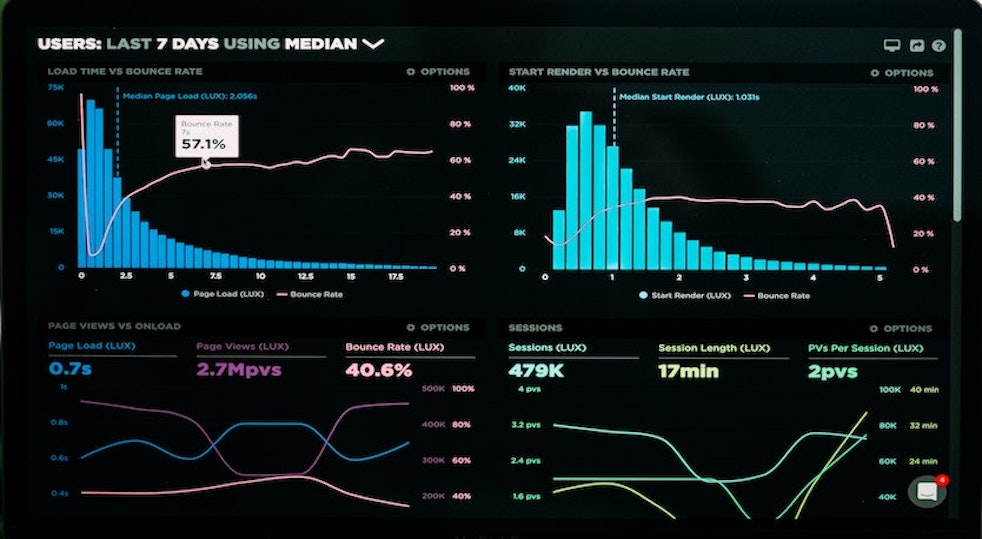To complement our series of QuickReads covering measurement, we will now explore the various data…

ChangeWise Quick Read: 5 Principles of Lean Part 1/5 Specify Value
This Quick Read Series takes a high-level look at the 5 Principles of Lean, starting with Specify Value.
We will explore the meaning of specifying value in a Lean organisation and how to challenge your thinking regarding what your customers want and need from your products and services. We will also think about why it’s important to accurately specify value along with some useful tools and techniques to help.

The 5 Principles of Lean: Origins
The 5 Principles of Lean are process orientated concepts initially described in 1997 by Lean Enterprise Institute founders, James P. Womack and Daniel T. Jones. They consist of Specify Value, Value Stream, Flow, Pull, and Perfection.
The idea is that the principles build on each other, creating a cycle of continuous improvement.

In this Quick Read, we will spend time focusing on Principle 1: Specify Value.
What is Value?
In a Lean organisation, value is defined and specified by the customer. Sound obvious? It is – but we seldom do this. The Voice of the Customer (VoC) can be suppressed by many things, including our assumptions regarding customer needs and wants, process limitations, inadequate or out of date SLAs and access to valid VoC.
I’m listening……tell me more about specifying customer value
The challenge is to accurately understand how your customers define and prioritise the various needs and expectations they have of your products and services. This includes:
- Clearly understanding who your customers are, along with their wants and needs
- Using the Voice of the Customer (VoC) to gather feedback (good & bad) to define value
- Understanding what happens to the product or service at each stage of the process so you can understand what the process needs to deliver
- Improving capabilities/attributes to be the best in terms of cost, quality and delivery
⭐️ Top Tip! A good way to define value is to ask yourself ‘would my customer willingly and knowingly pay for this?’. For example, my customer would be prepared to pay for the next day delivery of well packaged, correct products. However, my customer would not be prepared to pay for the delayed delivery of poorly packaged, incorrect goods.
I think you might be overcomplicating things……. surely customers just want my products and services as quickly and cheaply as possible?
Sometimes…….but definitely not always! Our customers are far more complex than this, and their needs and wants will differ and change depending on the product or service required. Considering the 5 priorities below can help:

These priorities will have differing levels of importance depending on the type of product or service needed. For example, consider the purchases below:
-
Quality: Purchasing coffee/school shoes/running trainers
-
Cost: Choosing a Gas supplier
-
Delivery: Grocery Shopping
-
Service & Safety: Buying a car/electrical products
-
Corporate Responsibility: Clothes/Water Suppliers/Insurance/Legal representation
Customers rarely place their needs neatly into one category but remembering to consider these 5 priorities will help to ensure you don’t make incorrect assumptions. For example, we often assume that customers want products as soon as possible – but the reality is that they are looking for a confirmed date that is reliable and will not change.
That’s all very well but how can I get hold of real customer insight?
There are many different ways we can find out what our customers want and need from us, some of them include:
- Complaints data
- Compliments
- Product returns
- Product/service sales preferences
- Contract cancellations
- Market share changes
- Customer referrals
- Closure rates of sales calls
- Consumer Champion / Customer
Insight/ Customer Experience Teams
In many instances, our clients do not have all the data they need to accurately assess their VoC and need to collect it. Don’t worry, we will cover this in a separate Quick Read!
⚠️ Important Point!! Not all customers are the same and they will have different needs and priorities even when you are supplying the same product or service. For example, if you supply cup-cakes your customer needs may vary depending on their size and opening hours. Bigger organsiations may require large quantities of cupcakes delivered in weekly batches, while others might prefer a smaller, daily delivery as they do not have the facilities to store goods appropriately.

Photo by American Heritage Chocolate on Unsplash
Ok, but my customers have a lot of needs and wants….how can I prioritise them effectively?
That’s a great question! We like to use a simple Lean Six Sigma technique called the KANO Model. This is a really useful tool for categorising and prioritising customer needs, determining which products or services should be developed and deciding which features of a product or service should be enhanced to increase customer satisfaction.
To get started, customer needs are separated into three categories: Delighters, Performance, Basic. We then use a simple diagram to look at how customers respond to products and services within these categories. At ChangeWise, we also find it useful to use a fourth category Enragers to better understand customer reactions.

Delighters are things that contribute to high levels of satisfaction and advocacy: Customers may not ask for these, but when they receive them, they lead to high levels of customer satisfaction.
With Performance attributes, the more the needs are meet, the more satisfied the customer.
Basic items are needs that must be met – they are the minimum you need to provide to even be considered. Failure to provide these needs will quickly result in dissatisfaction. These are a No. 1 priority.
Enragers are attributes that will always cause a negative impact and must be avoided.
Once you have categorised your products and services, you can focus on providing market-leading Performance while maintaining good standards in the Basics and creating opportunities for Delight:
- Basics must be met or the customer will not consider us
- Performance is where development opportunities exist
- One or two items can be selected from Delighters to create competitive differentiation
- Enragers must be avoided at all cost – they will drive customers away
For more details on how to use KANO, along with useful examples, check out our Kano Model Quick Read.
In Summary
Specifying Value from your customer’s perspective will ensure you create products and services that your customers really want and will continue to invest in. Accurate and ongoing assessment of VoC enables you to remain competitive and create a customer centric performance culture. To supply the wrong service in the right way is waste, so supply the right service to reduce wasted time and increase employee and customer satisfaction.
Want to know more? Get in touch with the ChangeWise team at info@changewise.co.uk
ChangeWise believes employee engagement is the foundation for successful Change. Training and coaching your people to use simple continuous improvement techniques will enable your organisation to continuously adapt and stay ahead in a constantly changing and challenging environment.
For updates and interesting Lean Change insights, connect with us on LinkedIn.



